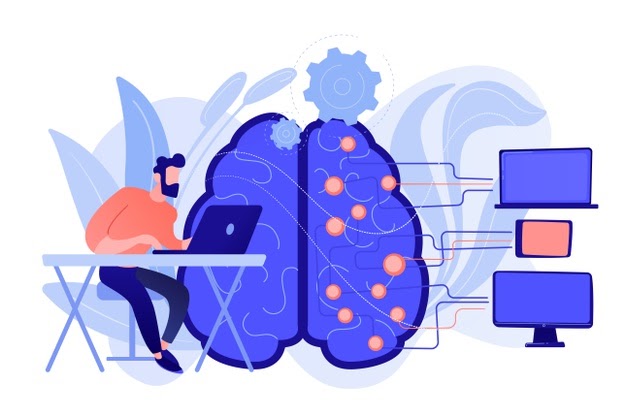Mobile app technologies continue to evolve. Businesses around the world are moving to mobile apps to expand their offerings and customer base. Due to their great success and advantages, they are often an excellent opportunity for businesses and corporations.
Let’s take a look at the top trends in mobile app development:
| Machine Learning

The mobile app approach with machine learning and artificial intelligence has made our mobile environment even more popular.
So far, AI and ML have dominated the growth of mobile apps and made our lives easier. Just give the machine’s instructions, and can do many things quickly.
Can streamline many complex business processes and improve business efficiency.
Identifying customer interests, providing user-centric feedback, and simplifying online transactions are second nature to them.
| Internet of Things
The Internet of Things (IoT) is the most innovative technology that is rapidly taking over the world of technology. This technology has presented users with a convenient environment to connect in real-time to various IoT-connected gadgets.
| Cross-platform mobile app development
It is the best way to develop applications that work well on any platform. We are experts in cross-platform app development and have set most of our apps this way. Cross-platform development costs around 40% less than native app development and 25% less in the long run.
Wearable technologies have also been evolving rapidly for years. Many companies integrated this technology into their ecosystem to ensure a seamless user experience for their customers at all times. Smartwatches, sports bracelets, and tracking devices are examples of wearable technologies.
With these IoT-enabled devices, an app can track all the activities people do during the day.
Users can track their heart rate, oxygen levels, blood pressure, and how many kilometers they have walked in a day, amongst different things.
According to Statista, their pleasure is 1.1 billion wearable devices by 2022. Moreover, mobile applications for the Internet of Things will become a veritable gold mine in the coming years.
Playing with apps
Want to attract more customers and improve app purchasing? Then gamification is the solution. Yu-Kai Chou uses the term “human-centric approach” to describe how games can add the entertainment experience to digital goods. Gaming gets people to do things, from uploading images to completing repetitive tasks that make things desirable.
Playfulness is useful in mobile apps because the game elements create a playful environment for users. There are several reasons why we should consider this strategy. Still, the main one is that gamification is a good choice when a balance between user engagement and retention is needed. In essence, we can use playfulness to create a mobile app that delivers sustainable growth for customers.
| Cloud applications

Recently, smartphone users have been demanding and desiring cloud-based mobile applications. As a result, all mobile plans have become sophisticated and widely advertised bundled programs. Mobile apps now require more space on the mobile device, and running a mobile app without the cloud became slow in some cases.
| AI
When we talked about mobile app development trends, artificial intelligence (AI) was usually at the forefront last year. From improving the customer experience to succeeding human assistants (e.g., Google Assistant on mobile), AI leads almost all markets.
Could machine learning be far ahead of AI? All these tools work together to improve solutions, identify trends and make business processes 100 times faster and more accessible for everyone.
| Low-level code
Low-level code is a visual approach to application development. To enable rapid deployment of various software solutions, low code abstracts and automates every step of the application lifecycle. To promote continuous collaboration, it separates the traditional defenses of marketing.
The choice of low-code community platforms has been brought to the forefront by the increased market demand for technology solutions and the shortage of professional developers.
| No code

A no-code framework is a development platform that uses a visual development environment to allow novice users to build applications by adding application components to create a complete application through methods such as drag-and-drop. With no code to develop applications, users do not need prior programming experience.
Too good to be true, it seems. Non-technical business users design their integrated applications! Excellent marketing, but it doesn’t work, does it? To create anything remotely resembling a functional application, you need talented programmers.
But low-code is not only true; it’s happening. As we say, it’s changing the industry, and that’s what’s driving all this publicity.
| Business Economics
As technology and its functions advance, businesses are changing at the same time. They aim to rethink their current way of doing business and adopt business agility where it is possible to improve processes, workflows, employee morale, productivity, performance, and other parameters.
For this reason, businesses are increasingly turning to enterprise application development.
Enterprises are focusing on creating robust and scalable enterprise software for their companies and offices worldwide through React Native app development or Ionic app development.
These are the most reliable mobile app development trends that businesses will love to follow in 2021. They will surely help you grow positively. For more queries you can contact top app development companies.




